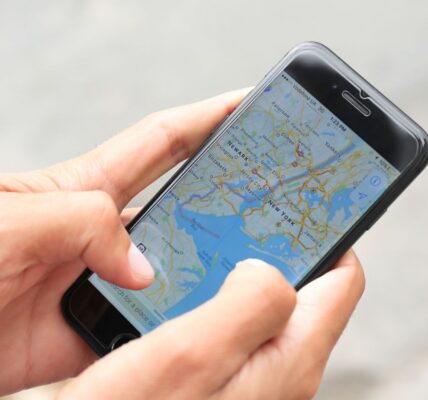One thing we all have to decide on when configuring our Windows 10 partitions is how many. The right number can be about 1, 2 or 3 and it really depends on your storage needs. You’ll want the extra space for an external hard drive if you’re going with a single partition but only one disk would work without slowing down your system too much otherwise.
The “how many partitions should i have windows 10” is a question that pops up on the internet from time to time. The answer to this question depends on how you use your computer and what you want to do with it.
This page was last updated on December 13th, 2021.
What is the optimal number of disk partitions for a Windows 10 PC? There is no such thing as a set number. It is entirely dependent on your requirements. Continue reading to learn how I would partition a 1 TB hard drive.
However, before we begin dividing our hard drive, have a look at our extensive guide on the benefits and drawbacks of hard disk partitioning.
What is the purpose of disk partitioning?
Drive partitioning, as you may know, is the process of separating a hard disk into several logical storage units known as partitions. It’s the equivalent of treating a single hard drive as if it were a collection of disks.
Now you may be wondering, “How many partitions do I require?” That is an excellent question. Before you start slicing your hard drive, make sure you have everything you need (Partitions). Consider your requirements carefully.
What are the most common types of files you use and save? This is crucial to understand before proceeding to divide the hard drive. This will assist you in determining how many disk partitions you’ll need. More on it later…keep reading….
If your hard drive is 1TB (1000 GB), (unless you’re a gamer), that’s a lot of room. Write down the amount of Disk Partitions you’ll need on a piece of paper.
What size should each division be? Individuals will have different numbers and sizes of disk partitions.
This is how I would partition my 1TB hard drive if I had to. (This is simply a rough estimate of how many disk partitions we’ll need in most cases.) You may adjust the size of the partitions or even the number of partitions.
An example of how many disk partitions you might require
1::: Primary partition for installing the operating system = 150GB That should enough for the OS and software files I’ll be installing. (If you’re planning to install games, you may want to raise this.) 2::: I’d establish an expanded partition for the leftover space once this partition was created. 3::: After that, I’ll start constructing logical partitions according to my requirements inside this expanded partition, as follows:
Partitions logical 1::: For my Documents, I’d set aside roughly 50GB. 2::: Then I’d set aside 100 GB for photos. 3::: Then there’s another 100 GB for my MP3 music collections. 4::: After that, I’ll need another 250 GB for my movie library.
5::: Then there’s another 200 GB for backups of my software, ISO image files for games, and device drivers, among other things. Because you never know when you’ll need to reinstall that program.
Back up all of your system and motherboard drivers (don’t depend on your optical disks), and it’s a good idea to copy and save the drivers that came with your new PC to folders within your backup partition.
6. I generally make a 50 GB or so additional partition and call it TRIAL or EXTRA. This is where I put all of my random objects, such as downloaded photos or PSD files that I work on and then delete. As if it were an extremely large trash can or a temporary transit stop. This is an optional step.
That consumes around 900GB of my 1 TB hard drive. The file allocation table will take up the remaining space.
NOTE: Because the capacity calculation techniques used by vendors and operating systems varies (1000GB=1TB for vendors, 1024GB=1TB for computer OS), 1TB in Windows may be equivalent to about 900GB.
This is just a rough estimate of how many disk partitions we’ll need. You may allocate and name the partitions anyway you like, and you can even create more partitions.
Partitions on hard disks provide a number of advantages.
Keep in mind that each partition is independent of the main OS partition. As a result, your data are protected in their own partition.
If anything goes wrong with your main partition, such as a system crash, a virus infection, or it won’t start, you’ll need to format and reinstall Windows from scratch.
You may do this without losing any of your data, music, films, or backups since they will stay intact inside their partition.
You may produce an identical picture of the whole partition and restore it, in addition to having a specialized partition for the operating system and apps. as it was when backed up in case of a tragedy, such as a system collapse or virus infection
After installing Windows, you may use the built-in disk management tool in Windows to partition the drive. However, if you want more exact control and settings, you may consider using this best free disk partitioning program.
Watch This Video-
The “disadvantages of partitioning a hard drive” is that it can be confusing for users. It also takes up more space on the hard drive, and may cause issues with programs.
Frequently Asked Questions
How many partitions should Windows 10 have?
A: Windows 10 should have at least two partitions. This is required because of the way that it boots up and since there are two options for starting Windows in Safe Mode, both need to be on separate disks. If you want any additional partitions, such as a recovery partition or a third disk solely dedicated to games and other apps, feel free to create them yourself following these steps:
1) Boot your computer into safe mode so that all software changes made during this process will not affect your system files
2) Create one new primary partition (yes our old secondary partition would also work if youre keeping it around which I recommend). To do this right-click the Unallocated space option from the left side menu bar
3) Right click on Unallocated space again then select New Simple Volume 〉Primary Partition from the drop down menu located under its name
Does Windows 10 need multiple partitions?
A: Yes, you will need at least two partitions for Windows 10. One should be the boot partition and one should be your main operating system drive.
How much of C drive should be free for Windows 10?
A: It depends on how much free space you have currently. The recommended amount of free space is 50 GB, but there are apps that can help with this calculation. I would recommend checking out the hard drive management tool in Windows 10 to make sure your disk isnt being overworked or using too many resources for other tasks (like defragmentation).
Related Tags
- windows 10 partitions explained
- recommended partition size for windows 10 64-bit
- how to partition c drive in windows 10
- efi system partition windows 10
- what are the advantages of disk partitioning




